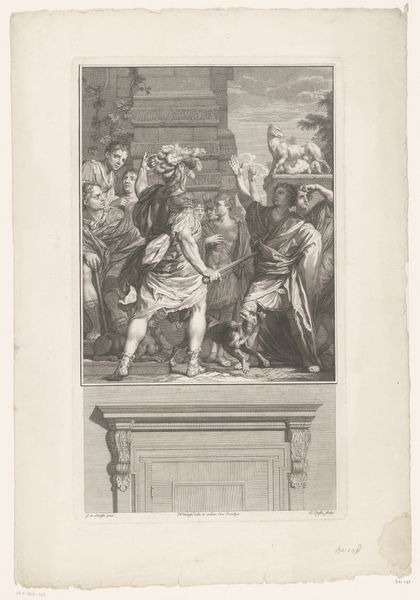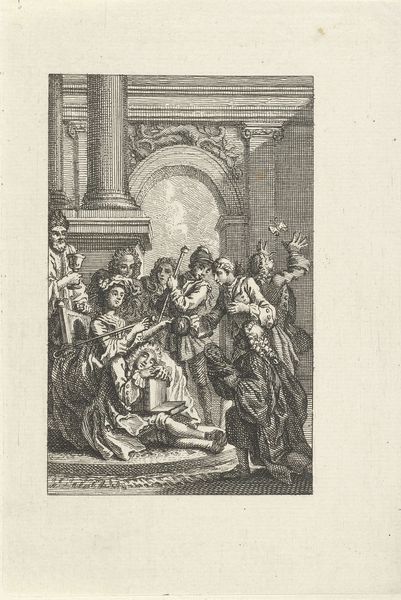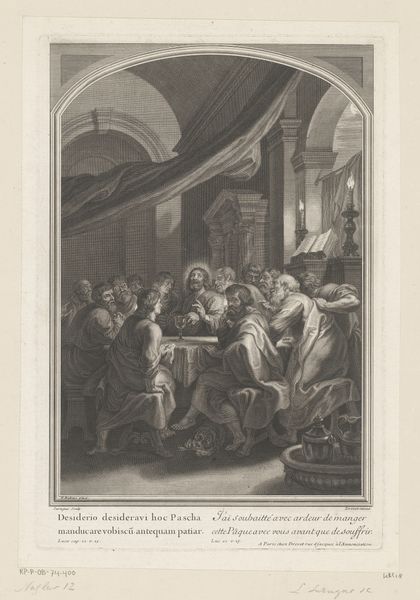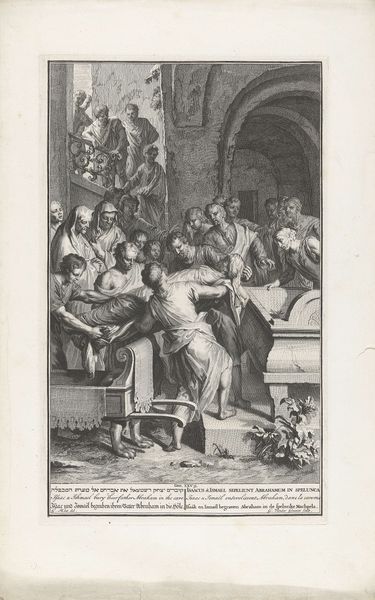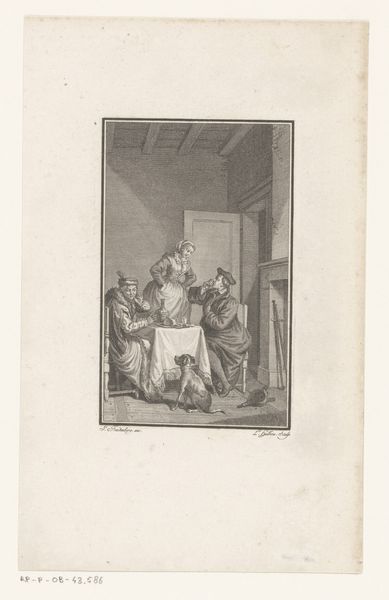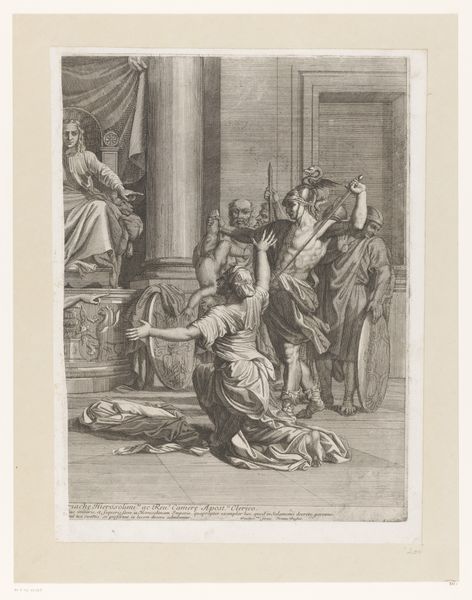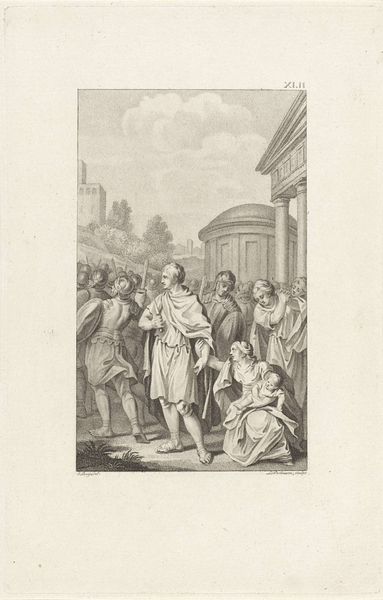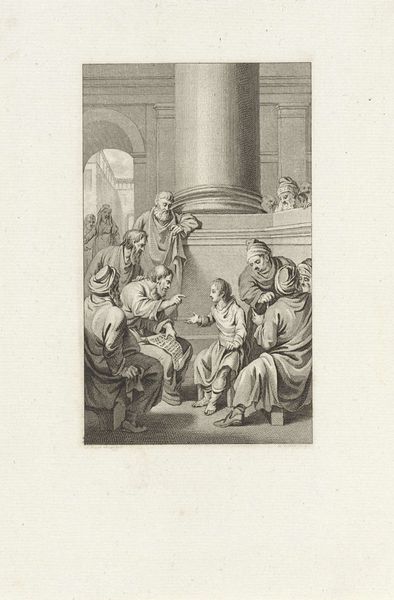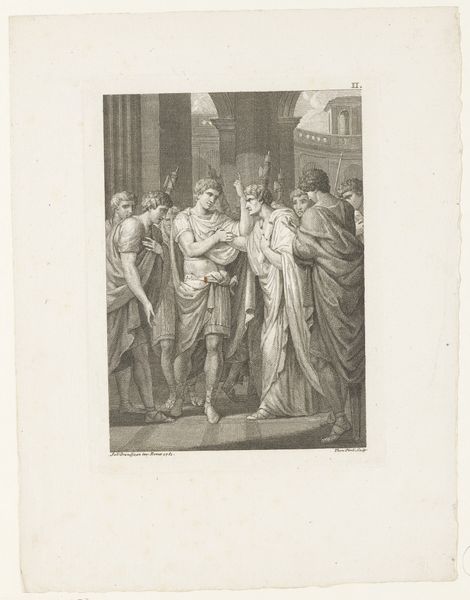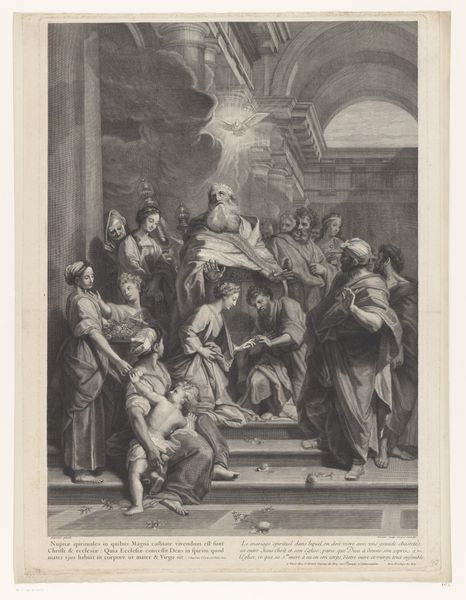
print, engraving
#
portrait
#
neoclacissism
#
narrative-art
# print
#
figuration
#
line
#
history-painting
#
engraving
Dimensions: height 237 mm, width 156 mm
Copyright: Rijks Museum: Open Domain
Reinier Vinkeles made this print, "Christ Blessing the Children," using the technique of etching. Etching is an intaglio printmaking method where a metal plate, often copper, is coated with a waxy, acid-resistant substance called a ground. The artist then scratches an image into the ground, exposing the metal. When the plate is immersed in acid, the exposed lines are etched or bitten into the metal. The longer the plate stays in the acid, the deeper and darker the lines will be. This process allows for fine, detailed work. The plate is then inked, and the surface wiped clean, leaving ink only in the etched lines. Finally, the plate is pressed onto paper, transferring the image. The level of detail achieved speaks to Vinkeles’ skill, but also to the repetitive, skilled labor needed to create such an image. Etchings like this were relatively affordable, contributing to the spread of imagery in the 18th century. They were not 'high art' so much as a means of circulating visual culture. Ultimately, understanding the etching process helps us appreciate the labor and skill involved in producing these images, and their role in a wider, developing media landscape.
Comments
No comments
Be the first to comment and join the conversation on the ultimate creative platform.

